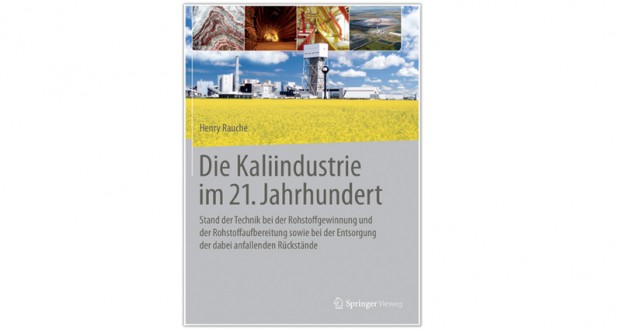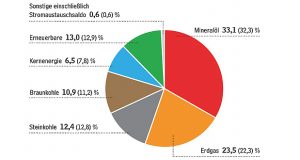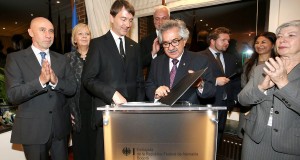Springer-Verlag Berlin Heidelberg 2015
With this book, which has the subtitle “The state of technology in raw material extraction and raw material preparation, as well as in the disposal of the tailings that arise from this”, the author is addressing a current key issue. In addition to phosphorus and nitrogen, potassium is essential for feeding the world’s growing population. Ideas of a sustainable development, based on the pillars of technology/economy, environment and social issues play an important role in this context. Furthermore, the potash industry is often the focus of public discussions, particularly in conjunction with approval procedures – usually from the point of view of environmental effects and compatibility. The latter not only applies to Germany but also to significant sections of the international potash fertiliser industry. Furthermore, the raw materials industry is shaped by a great dynamism when it comes to investment projects and rapidly fluctuating prices which can be achieved for the relevant (fertiliser) products in the global market.
It is certainly the case that this concerns complex issues and their interactions under marginal conditions that differ widely across the world and that depend on the location. The different specificities of this have consequences on the specificities of the production methods that are applied. The objective of this book is to provide a comprehensive overview of the potash industry with reference to the above-mentioned aspects.
The book consists of 580 pages, including descriptions of all of the international potash fertiliser industry locations and an appendix containing a list of abbreviations, a glossary and information about an impressive number of sources – totalling 1,159. One positive aspect of the book is that you can use info boxes in the text that deal with specific topics, either to illustrate a point, to give more information or to give an example.
As an introduction, the first chapter lists definitions with an international reference but which also have a clear reference to German regulations. The topic of sustainable development is dealt with in this context, in order to explain the methodical approach that was used when creating the book. The data basis and data availability are addressed, as well as the marginal conditions that affect the process chain.
Chapter 2 deals with the origin and the historical development of the industrial production of potash fertilisers.
Chapter 3 is dedicated to potash consumption and production. Particular emphasis is placed on the need for potash fertiliser production, the special driving forces for the potash market and the trends in development. The author makes statements for the near future with regard to production capacities and international brownfield and greenfield projects. Furthermore, there are observations on the requirements for potash products and their commercial specifications.
Chapter 4 places particular emphasis on the aforementioned marginal conditions for potash fertiliser production. They have a direct influence on the decisions regarding whether specific methods and procedures are economically and ecologically feasible for raw material extraction and processing and product improvement at a specific location. This chapter comprises an assessment of global resources and reserves of solid potash salt and mineable solutions that contain potash. The influence of climatic conditions – in particular on the processing procedures and tailings management – and, as a consequence, the extent of the required use of primary energy for the relevant processes, are explained here.
Chapter 5 deals with methods, procedures and systems that are applied across the world to extract raw potash. The author expands upon the mining extraction or solution method extraction of solid potash salt and the extraction of natural, non-valuable solutions at or close to the earth’s surface. He describes the historical development of this with particular reference to the geomechanical peculiarities of the types of salt rock that are encountered. Real-life experience and incidents where damage occurs in conjunction with decommissioning and backfilling mines are dealt with in detail. The author highlights a historical summary of the development of the methods of extraction in the three large potash mining regions in the northern hemisphere. Details about mining losses from the individual procedures provide information on the sustainability of the exploitation of deposits.
Chapter 6 discusses methods, procedures and the systems used to process raw potash, and to refine, store and transport the finished products. The author then goes into more detail about the basic processing procedures for solid potash salt. Here, his explanations focus on the main processes for enriching the raw potash from solid potash salt – flotation, hot dissolution and crystallisation. The author then talks about preparing technical solutions that result from the solution method extraction of solid potash salt, and he then explains the preparation of natural solutions.
The author describes the subsequent steps on the path to marketable potash fertiliser, specifically the production of intermediate products, which must be further enriched, dehydrated and dried. Storage, loading/shipping and appropriate means of transport are also dealt with in this chapter, although only as an overview. Furthermore, this chapter lists the types of machine, procedure and process charts, energy consumption, mineral and the resulting chemical raw salt compositions, as well as the K2O balances. The chapter then provides a comprehensive comparison of the processing methods for solid raw salt. The chapter concludes with mass-volume balances for potash fertiliser production and a comprehensive discussion about the opportunities and limitations when producing marketable by-products.
The often complex interactions between individual marginal conditions that have a direct effect on the tailings management are set out using descriptions and discussions of the methods, procedures and systems for disposing of the solid and liquid processing tailings, and for the stockpiling of the solid processing tailings. Here, the author confirms that there is a fundamentally limited scope for producing marketable by-products, since the yield of valuable substances in the modern potash industry is generally already high anyway and these are also a prerequisite for a successful competitive global position. He also gives his views on the issue of whether evaporating liquid processing tailings makes economic and ecological sense.
Chapter 8 is dedicated to the methods, procedures and systems used to dispose of tailings from the extraction and processing of raw potash to become potash fertiliser. Three large areas are addressed: The elimination of solid extraction and processing tailings as backfill – dry or with the help of carrier fluids brought into the mining cavities; the elimination of the solid processing tailings by stockpiling; and the elimination of liquid processing tailings and the disposal of the salt solutions that are produced by the stockpiling of the solid processing tailings. This chapter also includes information about the development of the tailings heap and its structure, the selection and preparation of the tailings site, tailings management and monitoring, as well as covering and planting vegetation on the tailings heap.
Chapter 9 follows with a comprehensive discussion on the state of technology in potash fertiliser production. In this chapter, the author picks up on statements from the previous chapters in the form of a comparative analysis of the modes of operation that are in practice today. He defines the state of technology, expands upon issues including the public discussion around tailings management in potash fertiliser production, makes statements (with regard to sustainability) on the level of extraction of deposits that can be achieved and on the recovery of resources for processing, and provides statements on the typical ratio of the mass of the unavoidable tailings produced that need to be eliminated to the mass of the finished product that can be sold.
In the form of an addendum, the last chapter (chapter 10) contains short profiles of all 71 potash fertiliser industry locations across the world. Each of these includes general aerial photographs and images of the production facilities, and lists extensive details about the locations.
This book offers more than just a summary of the state of technology in the potash industry in the 21st century. Rather, procedures and processes that are used across the world in potash fertiliser production are not only listed, they are also placed in the context of the natural and man-made marginal conditions that influence them and are discussed in this context. This also shows the limitations of what is feasible and what is acceptable under specific marginal conditions.
This book has the potential to become a definitive work on the state of technology, on explaining the environment and on the contextual evaluation of the procedures that are used in the potash fertiliser industry. With its wealth of information on the global and, in particular, German potash industry, it offers you reading material and a reference guide that goes far beyond what you would be provided with in professional circles alone. It is recommended reading for anyone who is grappling with questions about the potash industry in particular, and the raw materials industry in general. This applies in equal measure to representatives from the industry, authorities, science and research, as it does to any interested members of the public.
Review: Prof. Dr.-Ing., Dipl.-Wirt.-Ing. Per Nicolai Martens


